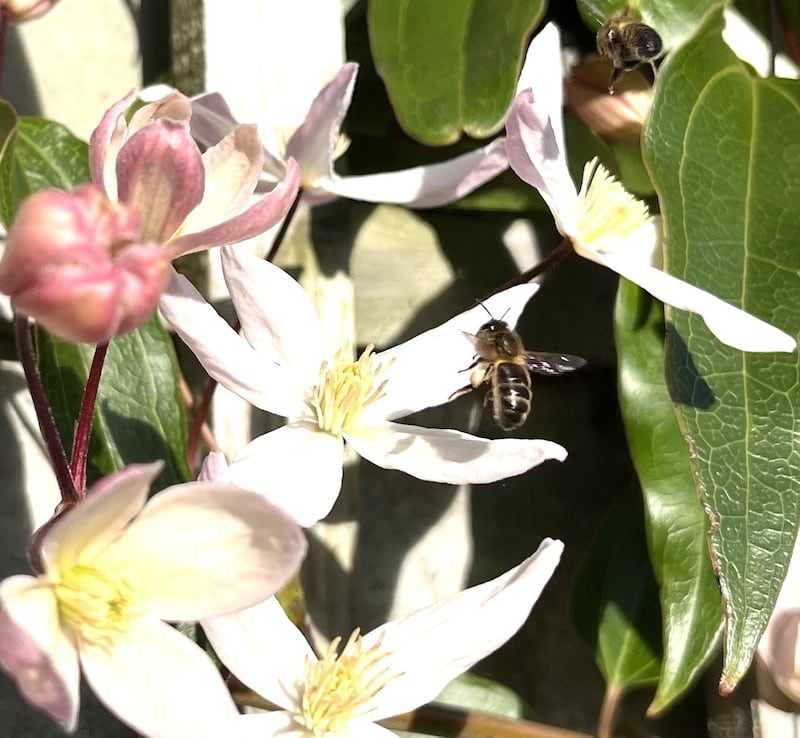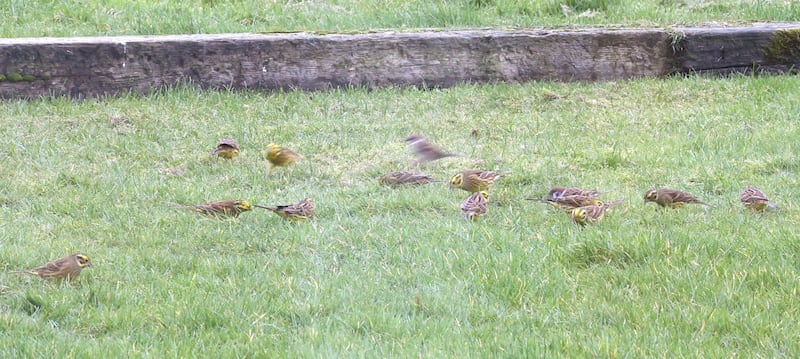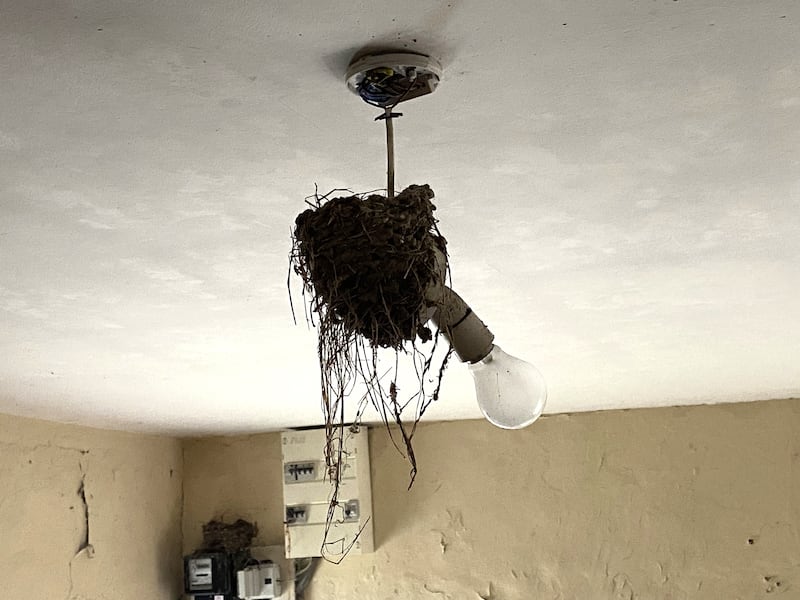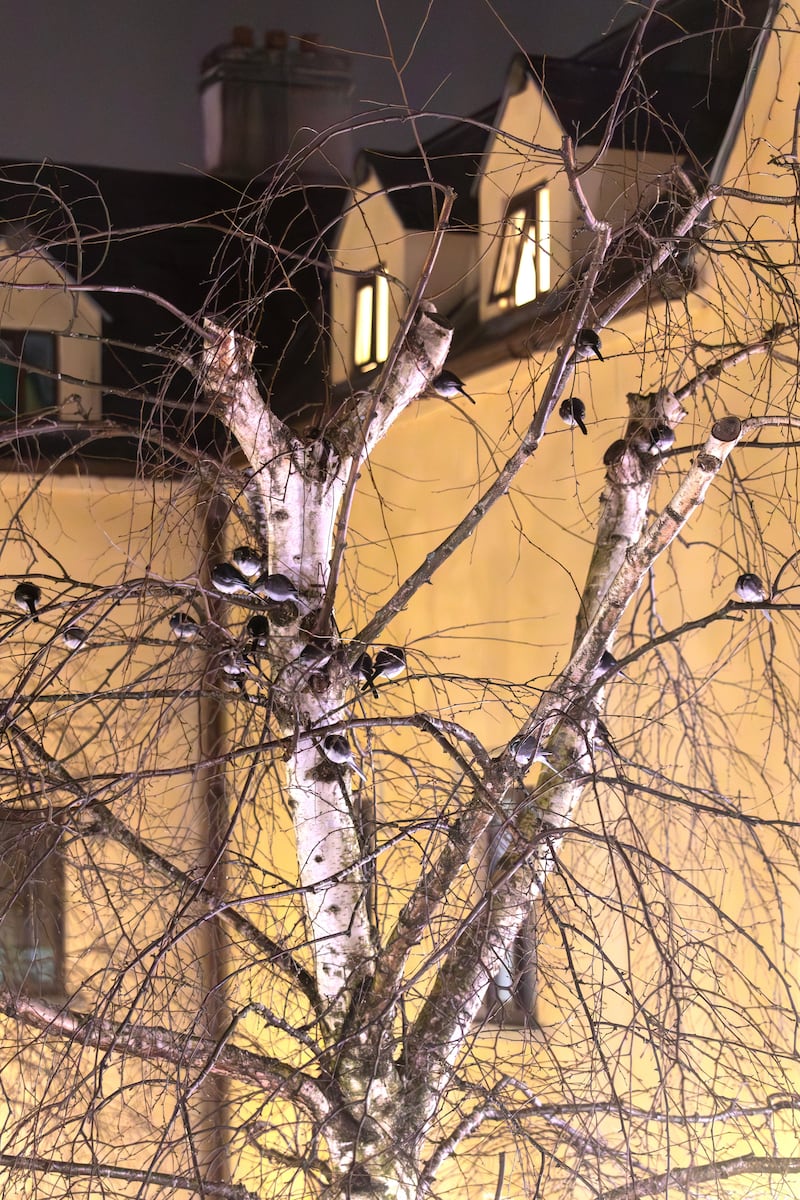While working in the garden I came across this unusual-looking ladybird. Ann Mary Thompson, Co Dublin
This is another form of the dastardly harlequin ladybird, Harmonia axyridis var conspicua. Adults can lay 20-50 eggs per day and up to 1,000-4,000 in their lifetime. Both the adults and larvae eat the larvae of other ladybirds as well as aphids. They will even turn cannibalistic if no other food can be found. They are now widespread in the south and east of the country, having been first recorded here in 2009.

I planted this Clematis armandii “Apple blossom” even though it isn’t on any pollinator-friendly lists that I have found. Lots of these bees (or hoverflies?) seem to be interested in it this spring. My question is whether they are getting any benefit from it at all or wasting their energy? They seem more interested in it than in other listed pollinator-friendly plants in my garden, for example the viburnum that is also flowering nearby. Niamh Garvey, Co Kildare
This is a honeybee visiting your plant. She is collecting pollen, as you can see from the laden yellow pollen basket on her leg, so she is not wasting her time. All plants that put out flowers are depending on insects to visit them and get their heads covered in pollen as they collect nectar (or in the case of bees, pollen as well). There is only a little drink of nectar in each, so the insect moves to the next flower for more – a flower pub crawl as it were. Some of the inadvertently gathered pollen on their heads goes on the female part of the second flower, pollinating it.
READ MORE

I saw your recent comments about yellowhammers becoming increasingly rare. There may be some hot spots where there are still numbers left. Attached is a photo of 12 feeding in my garden. We have nine or 10 every day and the highest count is 19 together at one time. There are male, female and juveniles. Michael McLaughlin, Banbridge, Co Down
This is great news. Yellowhammers form flocks in winter and travel looking for seed on the ground. The nesting season is May to July, when they will pair off and nest on the ground in tall grasses near hedges or walls. Areas where spring sowing of cereals still occurs suit them. Autumn sowing means a reduction in stubbles and fewer food sources in winter.

I spotted this nest in the kitchen of a disused cottage in rural Co Sligo. Is it a swallow’s nest? Chanel McCarrick, Co Sligo
It is indeed a swallow’s nest. Swallows nest indoors, making their nest from a mixture of mud and straw. An avian version of swinging from the chandeliers, no doubt. Keep an eye out and see if they return this to the same nest site.

There are four birch trees in a sheltered quad on the campus of St Columba’s College in Dublin. Every evening 17-20 pied wagtails roost in the one nearest my bedroom window. Is this a common scene? And come breeding and nesting season, are they much less communal and more territorial? Ronan Swift, Co Dublin
Pied wagtails do roost communally during the winter as together they find warmth and protection from predators. There was a famous roost on the plane trees that used to line O’Connell Street in Dublin in the 20th century, with a maximum of 3,600 being counted one evening. The nesting season is mid-April to the end of July, and they will pair off and nest in holes, covered ledges or indeed the old nests of other bird species. Check if they return next year to your birch tree.
Please submit your nature query, observation, or photo with a location, via irishtimes.com/eyeonnature











